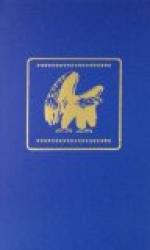“In every gallery in Europe there are hideous pictures of blood, carnage, oozing brains, putrefaction—pictures portraying intolerable suffering —pictures alive with every conceivable horror, wrought out in dreadful detail—and similar pictures are being put on the canvas every day and publicly exhibited—without a growl from anybody—for they are innocent, they are inoffensive, being works of art. But suppose a literary artist ventured to go into a painstaking and elaborate description of one of these grisly things—the critics would skin him alive. Well, let it go, it cannot be helped; Art retains her privileges, Literature has lost hers. Somebody else may cipher out the whys and the wherefores and the consistencies of it—I haven’t got time.”
PROFESSOR SCENTS PORNOGRAPHY
Unfortunately, 1601 has recently been tagged by Professor Edward Wagenknecht as “the most famous piece of pornography in American literature.” Like many another uninformed, Prof. W. is like the little boy who is shocked to see “naughty” words chalked on the back fence, and thinks they are pornography. The initiated, after years of wading through the mire, will recognize instantly the significant difference between filthy filth and funny “filth.” Dirt for dirt’s sake is something else again. Pornography, an eminent American jurist has pointed out, is distinguished by the “leer of the sensualist.”
“The words which are criticised as dirty,” observed justice John M. Woolsey in the United States District Court of New York, lifting the ban on Ulysses by James Joyce, “are old Saxon words known to almost all men and, I venture, to many women, and are such words as would be naturally and habitually used, I believe, by the types of folk whose life, physical and mental, Joyce is seeking to describe.” Neither was there “pornographic intent,” according to justice Woolsey, nor was Ulysses obscene within the legal definition of that word.
“The meaning of the word ‘obscene,’” the Justice indicated, “as legally defined by the courts is: tending to stir the sex impulses or to lead to sexually impure and lustful thoughts.
“Whether a particular book would tend to excite such impulses and thoughts must be tested by the court’s opinion as to its effect on a person with average sex instincts—what the French would call ’l’homme moyen sensuel’—who plays, in this branch of legal inquiry, the same role of hypothetical reagent as does the ‘reasonable man’ in the law of torts and ‘the learned man in the art’ on questions of invention in patent law.”




